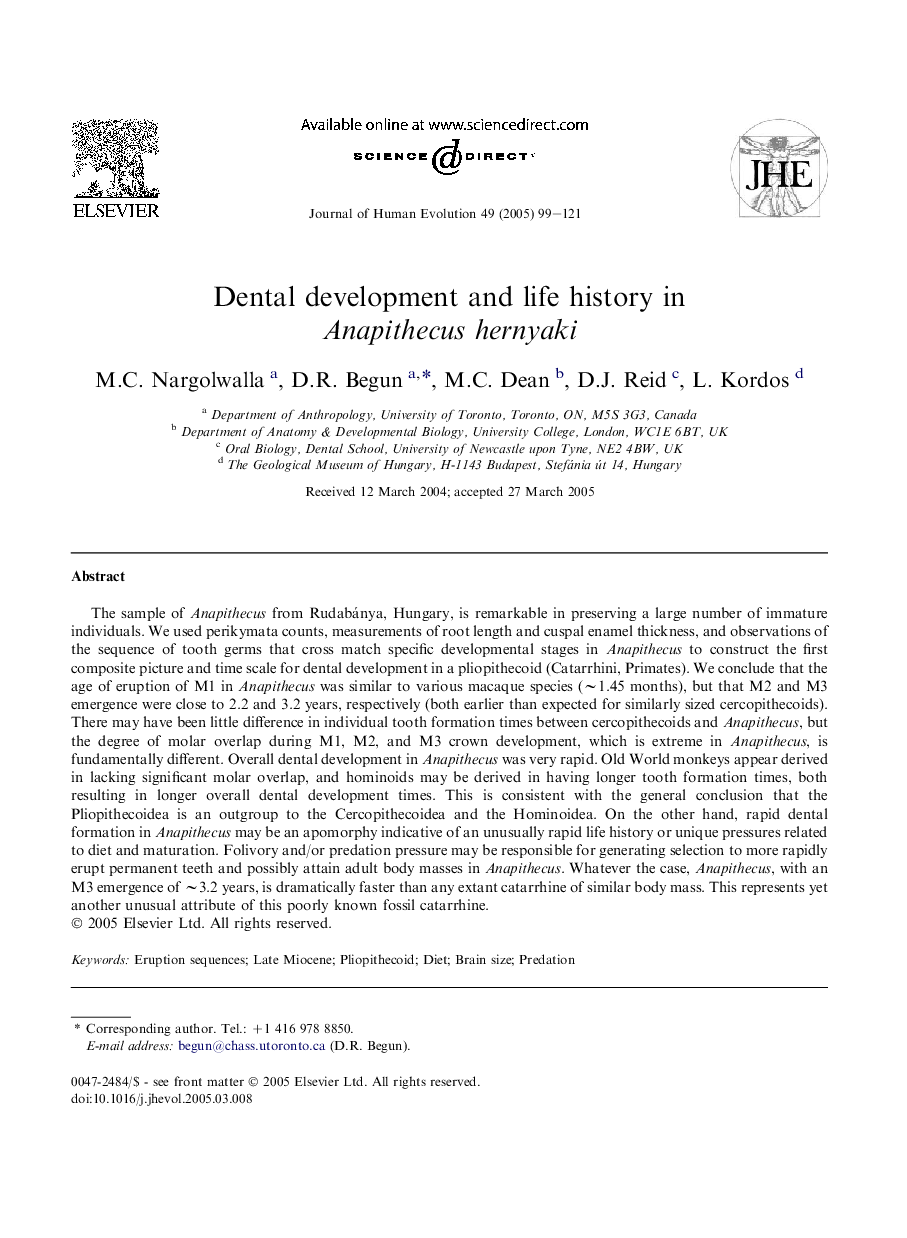| کد مقاله | کد نشریه | سال انتشار | مقاله انگلیسی | نسخه تمام متن |
|---|---|---|---|---|
| 9486017 | 1329564 | 2005 | 23 صفحه PDF | دانلود رایگان |
عنوان انگلیسی مقاله ISI
Dental development and life history in Anapithecus hernyaki
دانلود مقاله + سفارش ترجمه
دانلود مقاله ISI انگلیسی
رایگان برای ایرانیان
کلمات کلیدی
موضوعات مرتبط
علوم زیستی و بیوفناوری
علوم کشاورزی و بیولوژیک
بوم شناسی، تکامل، رفتار و سامانه شناسی
پیش نمایش صفحه اول مقاله

چکیده انگلیسی
The sample of Anapithecus from Rudabánya, Hungary, is remarkable in preserving a large number of immature individuals. We used perikymata counts, measurements of root length and cuspal enamel thickness, and observations of the sequence of tooth germs that cross match specific developmental stages in Anapithecus to construct the first composite picture and time scale for dental development in a pliopithecoid (Catarrhini, Primates). We conclude that the age of eruption of M1 in Anapithecus was similar to various macaque species (â¼1.45 months), but that M2 and M3 emergence were close to 2.2 and 3.2 years, respectively (both earlier than expected for similarly sized cercopithecoids). There may have been little difference in individual tooth formation times between cercopithecoids and Anapithecus, but the degree of molar overlap during M1, M2, and M3 crown development, which is extreme in Anapithecus, is fundamentally different. Overall dental development in Anapithecus was very rapid. Old World monkeys appear derived in lacking significant molar overlap, and hominoids may be derived in having longer tooth formation times, both resulting in longer overall dental development times. This is consistent with the general conclusion that the Pliopithecoidea is an outgroup to the Cercopithecoidea and the Hominoidea. On the other hand, rapid dental formation in Anapithecus may be an apomorphy indicative of an unusually rapid life history or unique pressures related to diet and maturation. Folivory and/or predation pressure may be responsible for generating selection to more rapidly erupt permanent teeth and possibly attain adult body masses in Anapithecus. Whatever the case, Anapithecus, with an M3 emergence of â¼3.2 years, is dramatically faster than any extant catarrhine of similar body mass. This represents yet another unusual attribute of this poorly known fossil catarrhine.
ناشر
Database: Elsevier - ScienceDirect (ساینس دایرکت)
Journal: Journal of Human Evolution - Volume 49, Issue 1, July 2005, Pages 99-121
Journal: Journal of Human Evolution - Volume 49, Issue 1, July 2005, Pages 99-121
نویسندگان
M.C. Nargolwalla, D.R. Begun, M.C. Dean, D.J. Reid, L. Kordos,